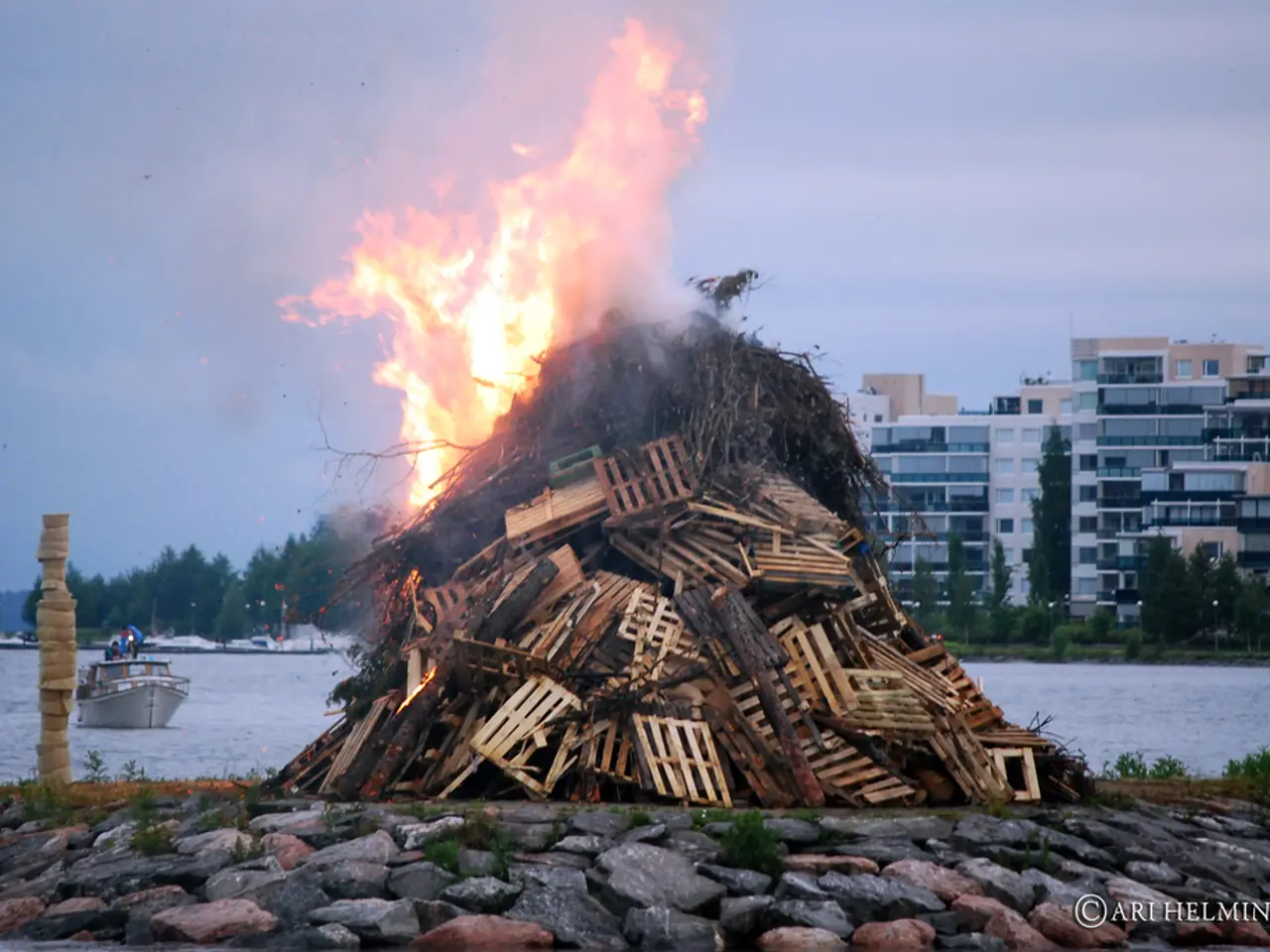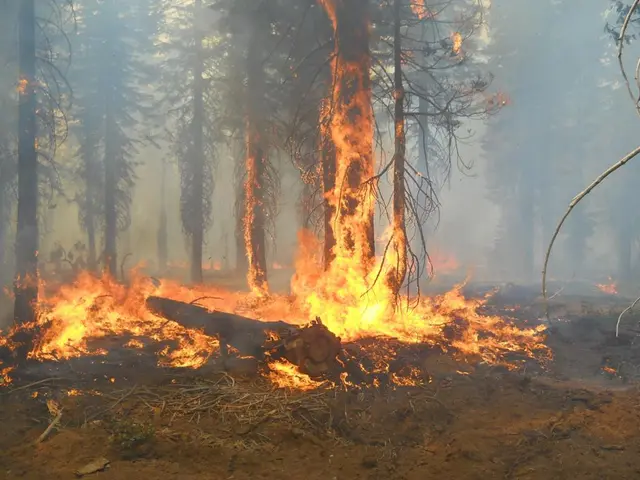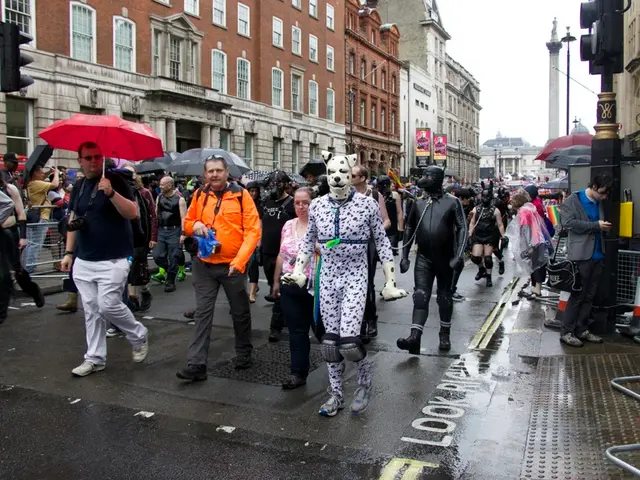Persistent Fire Engulfing Serra do Alvão Disturbs Locals for Over a Week
The Alvão Fire in Portugal, currently in its resolution phase as of August 11, 2025, has been a persistent threat to several villages in the Vila Real district, including Lamas. The fire, which started on August 2, has been active for approximately 12 days, with periods of reactivation on weekends and Monday afternoons [1][2][3][4].
The fire has primarily burned bushland and agricultural outbuildings, but no primary residences have been destroyed. However, the fire has caused damage to pastures and infrastructure, affecting local herders, and prompted no mandatory evacuations, though residents were advised to take precautions and local authorities prepared transport support [2][3].
The fire's behavior has been erratic, sometimes appearing weak and other times strong, due to the region's challenging topography and weather conditions. The Serra do Alvão, where the fire is located, is characterized by granite cliffs and forest tracks, making firefighting efforts more difficult [2][3]. The fire has been worsened by low humidity, drought-stressed vegetation, and erratic northerly winds, creating ideal circumstances for wildfires in the region [2].
The fire has caused significant disruption to the lives of the residents in the Serra do Alvao region. For instance, Manuela, an emigrant living in Switzerland, has been affected by the fire as two abandoned houses next to her home in Relva were destroyed. The accommodation in Muas, once offering a green view, now only has a black view due to the fire. Eduardo's business, located in Muas, has been threatened by the fire. Eduardo, a former resident of Muas, claims that the tourists didn't know what to do when the fire started [5].
The fire has also affected the village of Muas and has caused destruction to properties in the village of Relva, which is 12 kilometers from Vila Real. The affected population is currently assessing the damage caused by the fire [6]. Portugal has been under a nationwide state of alert through at least August 13, due to high temperatures, low humidity, and drought-stressed vegetation, which contribute to forest fire risk [1][2][3]. Restrictions include prohibitions on entry into forest areas, use of machinery for forestry or rural work, burnings, and fireworks [1][2][3].
In response, the government has deployed approximately 1,900 firefighters and aerial resources to combat the fire. Portugal's National Emergency and Civil Protection Authority is providing the latest updates on the fire's progress [1][2][3][4].
| Aspect | Details | |---------------------|----------------------------------------------------------| | Current Status | Entered resolution phase as of August 11; still active with firefighting ongoing; threatening mostly rural/agricultural areas | | Duration | Active since August 2 with reactivations during the period | | Impact | Damage to pastures and agricultural buildings; no main homes destroyed; no mandatory evacuations | | Location | Alvão mountain range, Vila Real district, including Lamas village | | Cause/Contributing Factors | Weather conditions (heat, low humidity, winds), drought stress, and difficult terrain | | Government Response | Nationwide fire alert in place; access restrictions and bans on rural/forest work; deployment of ~1,900 firefighters and aerial resources |
This information is based on the latest updates through mid-August 2025 from Portugal’s National Emergency and Civil Protection Authority and news reports [1][2][3][4].
[1] Portugal's National Emergency and Civil Protection Authority: https://www.pnecd.pt/ [2] The Local: https://www.thelocal.pt/ [3] The Guardian: https://www.theguardian.com/ [4] BBC News: https://www.bbc.com/ [5] The Telegraph: https://www.telegraph.co.uk/ [6] The New York Times: https://www.nytimes.com/
- The Alvão Fire, currently in its resolution phase, has been exacerbated by challenging weather conditions, low humidity, drought-stressed vegetation, and erratic northerly winds, which are typical factors contributing to climate-change-induced wildfires.
- As a result of the wildfire, the village of Muas and the nearby village of Relva have suffered property damage, and the local environmental-science has been affected due to the destruction of rural land and pastures.







